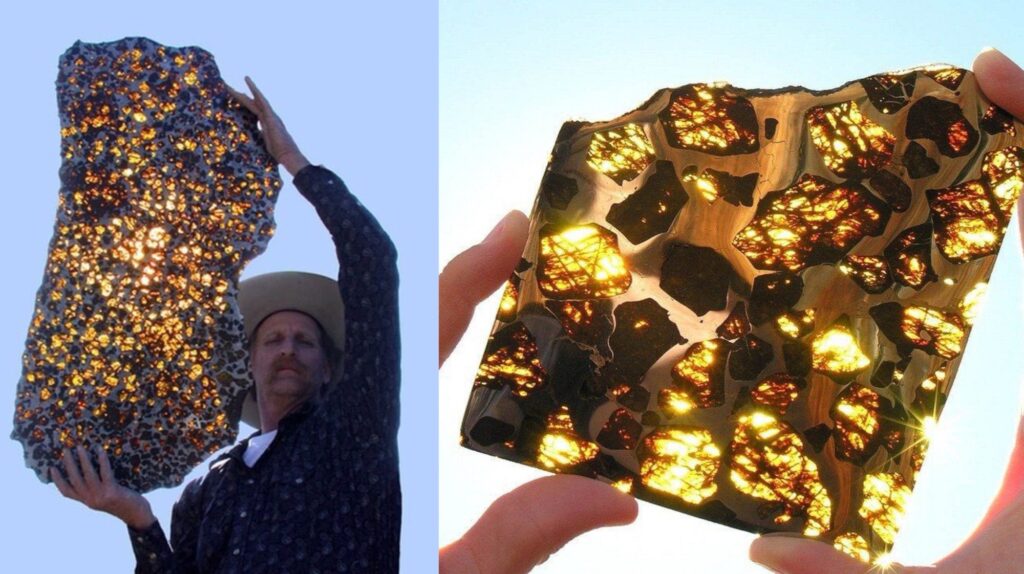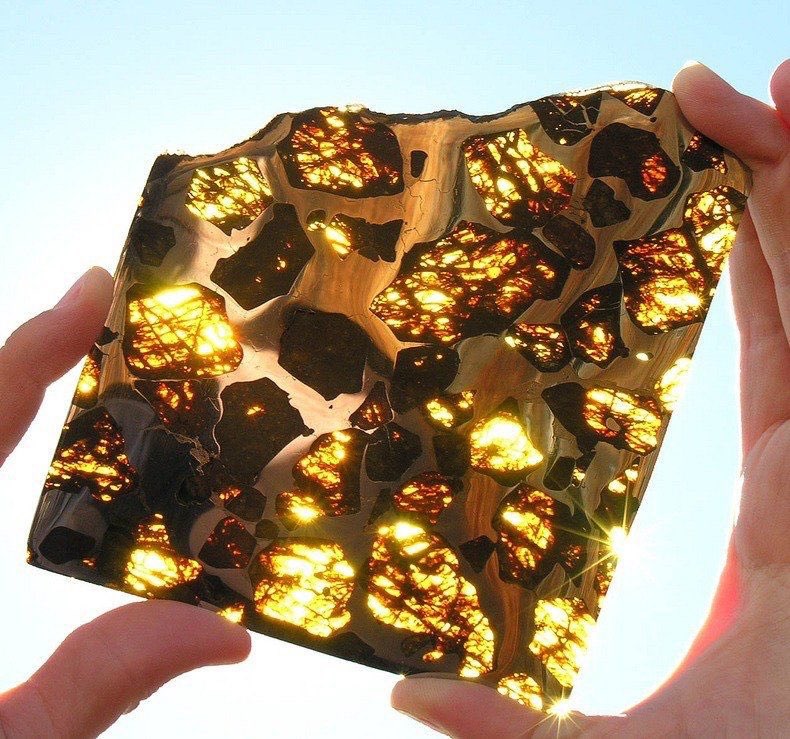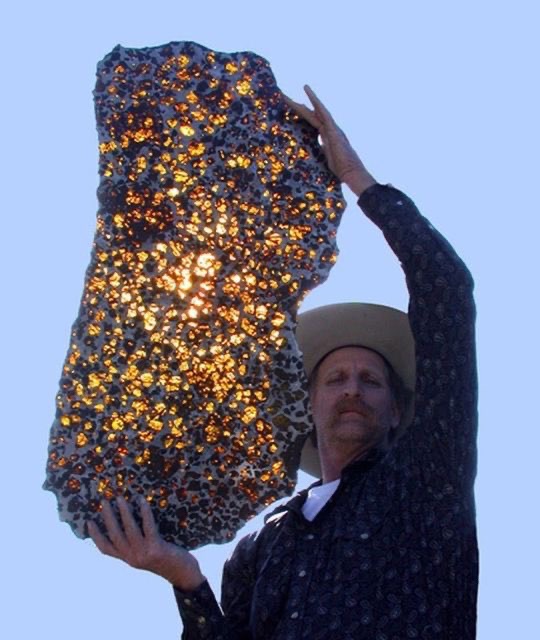

In the vast, arid expanses of the Gobi Desert in Xinjiang, China, a remarkable discovery was made in the year 2000. This discovery captivated the attention of meteorite enthusiasts and scientists worldwide. This discovery, known as the Fukang meteorite, is not just any space rock, but a stunning specimen of a pallasite. Pallasite is a rare type of stony-iron meteorite known for its breathtaking olivine crystals set in an iron-nickel matrix.

Discovery and Initial Analysis
The Fukang meteorite was stumbled upon by a local man. Reportedly a hiker, who was traversing the rugged terrain near the Fukang city in Xinjiang Uyghur Autonomous Region. Initially weighing about a ton (1000 kilograms), the meteorite’s presence was a fortuitous find in a region not typically known for such discoveries. Its first appearance in the public eye was at the Tucson Gem and Mineral Show in 2005. At the show it was exhibited and later partially cut into slices, revealing its mesmerizing internal structure.

Composition and Significance
Pallasites, such as the Fukang meteorite, are composed of large, gem-quality olivine crystals embedded in an iron-nickel matrix. These olivine crystals can range in color from green to yellow to brown, and their transparency and size make pallasites some of the most visually appealing meteorites known.
The significance of the Fukang meteorite extends beyond its aesthetic allure. Pallasites are believed to originate from the boundary between the mantle and core of differentiated parent bodies, such as asteroids. Studying these meteorites provides valuable insights into the internal structures and formation processes of these celestial bodies.
Scientific Insights and Theories
The exact origin of the Fukang meteorite is still a subject of study and debate among scientists. The leading theory suggests that it comes from a parent body that underwent complete melting and differentiation, forming a core and mantle. The meteorite likely represents material from the core-mantle boundary, ejected into space due to a cataclysmic impact on its parent asteroid.
The large size and clarity of the olivine crystals in the Fukang meteorite have also provided researchers with a rare opportunity. The opportunity to study the mineralogy and crystallography of these elements under conditions that are not typically found on Earth.

Today, the Fukang meteorite is not only a subject of scientific study but also a celebrated exhibit in museums and collections. Its slices and specimens are highly sought after by collectors and researchers. Both for their beauty and the secrets they hold about the early solar system’s history. The Fukang meteorite remains a stellar example of the treasures that lie hidden in the cosmos. Secrets waiting to be discovered and reveal the mysteries of the universe.

